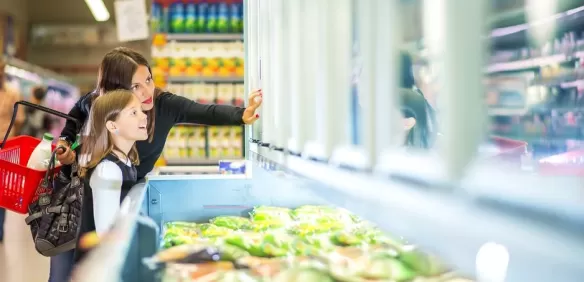
What modified atmosphere for the conservation of seafood products?
Seafood products are delicate raw materials, extremely sensitive to damage. Modified atmosphere packaging extends their shelf life.
With consumers waiting for ready-to-eat products, the pre-packaged fresh seafood market is experiencing growing success. But seafood products are delicate raw materials, extremely sensitive to damage. Packaging in an appropriate protective atmosphere, combined with strict temperature control, increases their shelf life. Find out how here.
Benefits of modified atmosphere
Protective atmosphere packaging (or Modified Atmosphere Packaging, MAP) consists of replacing the air inside the packaging with a gas (or a mixture) with protective properties. The technique aims to eliminate or reduce physical, enzymatic and microbial degradation which spoils foods, whether processed or not.
The objectives of packaging in a protective atmosphere are multiple: increase the shelf life of your products, maintain their original characteristics, benefit from attractive packaging, respond to the mass distribution market, improve traceability and facilitate transport.
Characteristics of seafood products
Many seafood products, fresh, live or cooked whole, in fillets, processed, can be packaged in a protective atmosphere. We can cite for example:
- lean white fish (cod, pollack, whiting, ling, etc.),
- fatty fish (mackerel, sardines, salmon, herring, bluefin tuna, etc.),
- dried, smoked fish,
- surimi,
- fish eggs,
- shellfish.
These are high humidity products with a high microbial risk, especially after processing (filleting, skinning, etc.). We can frequently be confronted with a risk of growth of strictly anaerobic germs such as Clostridium botulinum. Oily fish are sensitive to oxidation.
Which modified atmosphere to use?
Seafood products are very perishable due to their high water content, neutral pH and the presence of enzymes which cause rapid development of bad odors. The modified atmosphere helps protect and prevent the development of strict anaerobic germs in seafood products, responsible for this degradation.
Depending on the products, CO2/N2 or oxygen-incorporating gas mixtures will be used, in particular for the packaging of live products or products likely to develop anaerobic germs.
Estimated shelf lives are 6 days (fillets), 8-15 days (whole fish), 30 days (dried fish).
Seafood products
| Product | Mixture | TEMPERATURE | Duration * | ||
|---|---|---|---|---|---|
| N2 | CO2 | O2 | |||
| Fresh fish fillet | 60% | 40% | 4°C | 6-7 hours | |
|
|
40% 40% |
60% 60% |
|
15 hours 12 hours |
|
| Live mussels | 100% | 4°C | ? | ||
| Live oysters | 100% | 4°C | ? | ||
Preferential treatment
Seafood products are very fragile. Packaged in a modified atmosphere, they require special attention during production. In addition to choosing the appropriate gas mixture, the working conditions, environment, personnel, etc. must be impeccable so that the products are kept as long as possible. Indeed, to ensure good protection, the materials of the trays or bags used for their packaging must be well chosen, gas-tight, and the packaging machines well adjusted. It is therefore a whole surveillance system that must be put in place and integrated into health control plans.
Food safety, technical excellence, economic performance, innovation, quality and sustainable development: your objectives are also ours. We share the same taste for innovation, we develop new solutions to help you find new markets and bring more value. Our experts help you define the appropriate food gas and advise you on the choice of films and the implementation of the machines.
Do you have questions about modified atmosphere for seafood preservation? Please fill out our contact form.
Our experts will respond to you within 24 hours
Frequently asked questions
How to increase the shelf life of products?
What does “packaged in a protective atmosphere” mean on certain food packaging labels?
What are the different packaging machines for M.A.P?
What installation do I need to use gas?
What modified atmosphere for the conservation of fresh meats?
What modified atmosphere for bakery products?
What modified atmosphere for the conservation of seafood products?
What modified atmosphere for the conservation of cheese and dairy products?
What modified atmosphere for dry products?
What modified atmosphere for the conservation of prepared fruits and vegetables?
